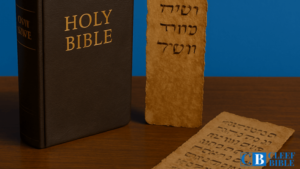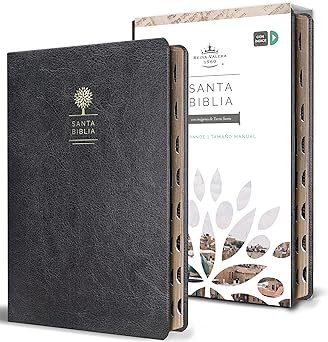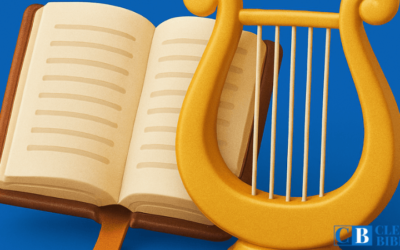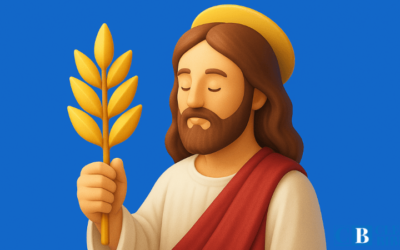Have you ever wondered who risked their life so you can read the Bible in English today?
Behind every translated word is a story of courage, faith, and spiritual revolution.
The English translation of the Bible was not just a linguistic act, but a movement that transformed nations, challenged religious powers, and empowered millions of believers.
Discover how pioneers like John Wycliffe and William Tyndale changed the course of history, the challenges they faced, and why their efforts continue to resonate in every page we read today.
Introduction to the English Translation of the Bible
Throughout history, direct access to the Scriptures has been an urgent need for the spiritual growth of people.
Here we explore why this clamor for an English Bible arose and what factors made it possible:
Why was an English Bible necessary?
For centuries, most Bible translations were in Latin (such as the Vulgate), a language that only educated clergy could understand.
This created a gap between the Word of God and the daily lives of ordinary people.
The need for an English translation arose as a cry for spiritual freedom and biblical understanding.
- English was the mother tongue of the people, but there was no Bible accessible to the majority.
- Without knowledge of Latin, the Bible remained closed to peasants, artisans, and even some nobles.
- An English version would allow every believer to read, meditate on, and apply the Word for themselves.
The importance of reading the Scriptures in the language of the people
Translating the Bible into the everyday language of the people was not just an academic act, but profoundly pastoral and missionary.
- Faith is strengthened when the believer can hear God in his own language.
- Allows families to teach the Scriptures in their homes without relying entirely on clergy.
- It opens the doors to a personal relationship with God based on the direct knowledge of His Word.
Religious and political context of the Middle Ages in Europe
The translation of the Bible into English did not occur in a vacuum, but in a context of strong religious control and political conflict.
- The Roman Catholic Church had a monopoly on biblical interpretation, and prohibited unauthorized translations.
- Translating the Bible into English was considered an act of rebellion and heresy.
- Some reformers risked their lives to deliver the Scriptures to the people.
- Politically, Europe was experiencing tensions between the power of Rome and the emerging monarchies, which influenced the push for national translations.
This tense environment made the appearance of the Bible in English more than a literary endeavor: it was a revolutionary act with eternal consequences.
The first partial translations into English
Before there was a complete Bible in English, several Anglo-Saxon Christians made fragmentary attempts to translate parts of the Scriptures.
These efforts reveal the early desire to bring the Word of God closer to the English-speaking people.
Fragments in Anglo-Saxon: the first attempts
- In the 7th to 10th centuries, some monks began to translate biblical passages into Old English (Anglo-Saxon).
- They focused mainly on the Gospels, the Psalms and liturgical texts.
- These translations were not systematic or complete, but they showed a desire to understand the Scriptures in the vernacular.
- Most were interlinear: the translation was written directly over the Latin text.
The Venerable Bede and his early contributions
- Bede (672–735), one of the most influential scholars of the Anglo-Saxon Church, translated the Gospel of John into English before his death.
- Although this translation has been lost, it is known from his biographers that it was made with reverence and fidelity.
- His life demonstrates that the desire for an accessible Bible was not born in modern times, but in the early days of English Christianity.
The Paris Psalter and other partial versions
- In the 11th and 12th centuries, several bilingual (Latin-English) psalters appeared, used for devotions and teaching.
- The Paris Psalter included glosses and paraphrases of the Psalms, very useful for monks who had not yet mastered Latin.
- These versions were crucial steps in the biblical literacy of the English people.
John Wycliffe and the first complete Bible in English
Wycliffe was a radical pioneer who brought the entire Bible into English homes for the first time.
His life and work marked a before and after in the history of biblical translation.
Who was John Wycliffe and what was his mission?
- Born in 1320, Wycliffe was a theologian, philosopher, and professor at Oxford University.
- He questioned the corruption of the Church and promoted the supremacy of Scripture over church tradition.
- He was convinced that every Christian should have direct access to the Bible in his own language.
- Together with his followers, he undertook the monumental task of translating the entire Bible from Latin into Middle English.
Features of the Wycliffe Bible
- It was the first complete Bible in English, completed around 1382.
- Translated directly from the Latin Vulgate, not from Hebrew or Greek.
- It was handwritten, copied by hand, which made its reproduction slow and expensive.
- The language was archaic, but clear and reverent.
- It was distributed among groups known as “the Lollards,” who read and taught the Bible to the people.
Reaction of the Catholic Church to its translation
- The Catholic Church saw this translation as a direct threat to its authority.
- He considered it dangerous for people without theological training to interpret the Scriptures.
- In 1408, new translations without ecclesiastical approval were officially prohibited.
- Wycliffe was posthumously condemned as a heretic, and his remains were exhumed and burned in 1428 as a symbol of rejection.
The persecution of the Lollards and the underground
- The Lollards, followers of Wycliffe, were persecuted for teaching from the Bible in English.
- Many were imprisoned, tortured or executed for heresy.
- Even so, the manuscripts continued to circulate in secret, keeping the flame of access to the Word alive.
- This resistance marked the beginning of a profound biblical reform in England that would flourish centuries later.
The first partial translations into English
Before there was a complete Bible in English, several Anglo-Saxon Christians made fragmentary attempts to translate parts of the Scriptures.
These efforts reveal the early desire to bring the Word of God closer to the English-speaking people.
Fragments in Anglo-Saxon: the first attempts
- In the 7th to 10th centuries, some monks began to translate biblical passages into Old English (Anglo-Saxon).
- They focused mainly on the Gospels, the Psalms and liturgical texts.
- These translations were not systematic or complete, but they showed a desire to understand the Scriptures in the vernacular.
- Most were interlinear: the translation was written directly over the Latin text.
The Venerable Bede and his early contributions
- Bede (672–735), one of the most influential scholars of the Anglo-Saxon Church, translated the Gospel of John into English before his death.
- Although this translation has been lost, it is known from his biographers that it was made with reverence and fidelity.
- His life demonstrates that the desire for an accessible Bible was not born in modern times, but in the early days of English Christianity.
The Paris Psalter and other partial versions
- In the 11th and 12th centuries, several bilingual (Latin-English) psalters appeared, used for devotions and teaching.
- The Paris Psalter included glosses and paraphrases of the Psalms, very useful for monks who had not yet mastered Latin.
- These versions were crucial steps in the biblical literacy of the English people.
John Wycliffe and the first complete Bible in English
Wycliffe was a radical pioneer who brought the entire Bible into English homes for the first time.
His life and work marked a before and after in the history of biblical translation.
Who was John Wycliffe and what was his mission?
- Born in 1320, Wycliffe was a theologian, philosopher, and professor at Oxford University.
- He questioned the corruption of the Church and promoted the supremacy of Scripture over church tradition.
- He was convinced that every Christian should have direct access to the Bible in his own language.
- Together with his followers, he undertook the monumental task of translating the entire Bible from Latin into Middle English.
Features of the Wycliffe Bible
- It was the first complete Bible in English, completed around 1382.
- Translated directly from the Latin Vulgate, not from Hebrew or Greek.
- It was handwritten, copied by hand, which made its reproduction slow and expensive.
- The language was archaic, but clear and reverent.
- It was distributed among groups known as “the Lollards,” who read and taught the Bible to the people.
Reaction of the Catholic Church to its translation
- The Catholic Church saw this translation as a direct threat to its authority.
- He considered it dangerous for people without theological training to interpret the Scriptures.
- In 1408, new translations without ecclesiastical approval were officially prohibited.
- Wycliffe was posthumously condemned as a heretic, and his remains were exhumed and burned in 1428 as a symbol of rejection.
The persecution of the Lollards and the underground
- The Lollards, followers of Wycliffe, were persecuted for teaching from the Bible in English.
- Many were imprisoned, tortured or executed for heresy.
- Even so, the manuscripts continued to circulate in secret, keeping the flame of access to the Word alive.
- This resistance marked the beginning of a profound biblical reform in England that would flourish centuries later.
William Tyndale and the Bible from the original texts
Tyndale was a crucial figure in biblical history.
His passion for Scripture and commitment to truth cost him his life, but his legacy continues to illuminate millions.
Why is Tyndale considered a biblical martyr?
- He was born in 1494 and studied at Oxford and Cambridge.
- He was convinced that all Christians should have direct access to the Bible.
- He claimed that he would make “a child plowing the field know more of the Scriptures than the priests.”
- He was persecuted by the Church and executed in 1536 for translating the Bible without authorization.
- He died by stranglement and burning, praying: “Lord, open the eyes of the King of England!”
His focus on the original Hebrew and Greek
- Unlike Wycliffe, who translated from the Vulgate, Tyndale used both the Hebrew and Greek texts.
- His version of the New Testament (1526) was the first printed in English from the Greek.
- He also translated parts of the Old Testament directly from Hebrew, displaying revolutionary textual fidelity.
- His clear, direct, and profound style transformed biblical understanding in English.
Influence on the future King James Bible
- Around 80% the King James Version is based on Tyndale's translations.
- His work laid the linguistic, theological and stylistic foundations for this monumental version.
- His legacy lives on not only in history, but in every modern English Bible reading.
- He was a pioneer who paved the way for centuries of faithful translation.
His arrest, execution and legacy
- He was betrayed and arrested in Belgium, where he had sought refuge.
- He remained imprisoned for 500 days before being executed.
- His death sparked a wave of indignation among reformers.
- Today he is remembered as the “father of the English Bible,” and his name is synonymous with courage and fidelity.
Other key figures in English translation
Following Tyndale, several reformers continued the work of making the Bible accessible to the people, perfecting, expanding, and adapting their work to new generations.
Miles Coverdale and the first complete printed Bible
- In 1535, Coverdale published the first complete Bible printed in English.
- He used Tyndale's translation as a basis, as well as texts in Latin, German and others.
- Although he did not know Hebrew or Greek deeply, he managed to produce a fluid and accessible text.
- His work was sponsored by Thomas Cromwell and became an official resource in churches.
Thomas Matthew (John Rogers) and his editions
- John Rogers, under the pseudonym Thomas Matthew, combined the translations of Tyndale and Coverdale.
- In 1537 he published the “Matthew Bible”, which was widely accepted.
- It was approved by King Henry VIII, allowing its distribution in England.
- Rogers was also martyred under the reign of Mary Tudor for his fidelity to the Reformed Bible.
The Geneva Bible and the Protestant exile
- Translated in Geneva by English exiles in 1560.
- It was the first English Bible with modern chapter and verse divisions.
- Very popular among the Puritans and Reformers, it was even taken by the Pilgrims to America.
- It had marginal notes with Calvinist interpretation, which caused friction with the Anglican authorities.
The Bishops' Bible and its impact on the liturgy
- Published in 1568 under the direction of the Anglican Church.
- It sought to unify the versions in use and offer an alternative to the Geneva Bible.
- It was used in official liturgical services for decades.
- Although not as influential as other versions, it served as the basis for the King James Bible in 1611.
The King James Version
The King James Version (KJV), also known as the Authorized Version, is one of the most influential and widely read translations in history. Its origins and legacy marked a turning point in the biblical and literary history of the English-speaking world.
Why was this translation commissioned in 1604?
- It was ordered by King James I of England at the Hampton Court Conference.
- The purpose was to unify the country's different religious factions.
- The Geneva Bible was very popular among the Puritans, but its marginal notes were seen as subversive.
- An authoritative translation was sought without conflicting doctrinal interpretations.
- The king also wished to strengthen his authority as head of the Church of England.
Main translators and methodology used
- More than 50 scholars participated in the translation.
- They were divided into six groups (two in Oxford, two in Cambridge and two in Westminster).
- They worked from available Hebrew, Aramaic, and Greek texts, as well as earlier versions such as Tyndale, Coverdale, and the Bishops' Bible.
- The focus was on achieving textual fidelity with literary beauty.
- Each passage was reviewed multiple times by committees to reach consensus.
Literary legacy and influence of the KJV
- His poetic, majestic, and rhythmic style has profoundly influenced the English language.
- Many common phrases in modern English come from this version.
- It was the predominant Bible for over 300 years in the English-speaking world.
- His public reading in churches and homes shaped generations in language, ethics, and faith.
- Authors such as Shakespeare, Milton and Lincoln were influenced by his style.
Comparison with previous versions
- Unlike Wycliffe (Vulgate) or Tyndale (original texts), the KJV combined sources and collective experience.
- Improved grammatical and poetic precision compared to the Bishops' Bible.
- Although based on Tyndale's work, it offered a more complete and refined version.
- Its doctrinal neutrality made it acceptable to different Protestant groups.
- For centuries, it was the most widely read Bible in English, setting a standard for translation.
Cultural and spiritual impact of the English Bible
The translation of the Bible into English not only transformed personal faith, but also the political, social, and cultural history of the West.
Formation of the Protestant conscience
- Direct access to the Scriptures fostered the idea of the “priesthood of all believers.”
- He promoted personal interpretation, decentralizing the power of the institutional Church.
- It strengthened movements such as Puritanism, Pietism, and the evangelical revival.
- The Bible became the standard of faith, practice, and righteousness in daily life.
Promoting literacy in Europe
- The availability of the Bible motivated thousands to learn to read.
- It was the first book that many homes owned.
- Protestant schools used the Bible as their primary reading text.
- Literacy increased dramatically in countries where Bible reading was promoted.
The Bible as the basis of Western thought
- He laid the foundations for the development of democratic thought and human rights.
- He influenced literature, law, philosophy and education.
- It inspired moral codes, family structures and community values in Europe and America.
- Its impact transcends religion and reaches all areas of civilized life.
- The English translation was one of the driving forces behind this transformative process.
Modern translations and global access
English translation of the Bible didn't stop with the King James Version. In recent centuries, new versions have emerged that seek greater accuracy, clarity, and accessibility, adapting to contemporary readers.
The English Standard Version (ESV) and other revisions
- The ESV (English Standard Version), published in 2001, is one of the most respected modern translations.
- It seeks fidelity to the original texts with elegant yet contemporary language.
- It is based on the Revised Standard Version (RSV), with stylistic and exegetical improvements.
- Other notable versions include the New International Version (NIV), the New Living Translation (NLT), and the New King James Version (NKJV).
- These reviews vary in their approach, from literal accuracy to clarity in everyday language.
Dynamic translation vs. literal translation
- Literal translations (such as the NASB or ESV) seek to closely follow the original text word for word.
- Dynamic translations (such as the NLT or NIV) prioritize conveying the general meaning more fluidly.
- Each approach has advantages: literal translation is more faithful for in-depth biblical studies, while dynamic translation is more accessible to new readers.
- Some translations try to balance both approaches, such as the Christian Standard Bible (CSB).
- The choice of translation depends on the reader's objective: devotional, academic or evangelistic.
Digitization and worldwide distribution of the Bible
- Apps like YouVersion, Bible Gateway, and Logos have brought the Bible to millions of devices.
- Today, anyone with an internet connection can access dozens of English versions for free.
- There are also interactive tools that allow you to compare translations, study original terms, and make reading plans.
- Digitalization has eliminated geographical, economic, and linguistic barriers.
- Thanks to technology, the English Bible continues to be one of the most influential and widely shared works in the world.
Recommended books on the English translation of the Bible
If you'd like to delve deeper into the history, personalities, and challenges behind the translation of the Bible into English, these books are excellent study companions. All are available on Amazon:
📘 “The Bible in English” – David Daniell
A detailed, rigorous, and accessible study of all the historical stages of Bible translation into English. It covers the period from Wycliffe to contemporary versions, including their cultural impact.
📘 “God's Bestseller: William Tyndale” – Brian Moynahan
A gripping biography of the man who challenged religious power to bring the Bible to the people. It chronicles his courage, suffering, and eternal legacy as a reformer and martyr.
📘 “Wide as the Waters: The Story of the English Bible” – Benson Bobrick
A narrative tale that blends history, politics, and spirituality, showing how the English Bible transformed not only the church but also Western culture.
These resources are ideal for those who love biblical history, in-depth study, and spiritual development based on God's Word.
Perfect, here's the full FAQ section for your post "Who First Translated the Bible into English?", optimized for SEO, clarity, and reader engagement:
Frequently Asked Questions About the English Translation of the Bible
Who first translated the complete Bible into English?
John Wycliffe was the first to lead a complete translation of the Bible into English in the 14th century, although his version was based on the Latin Vulgate, not the original Hebrew and Greek texts.
Why did the Church oppose translating the Bible?
Because he feared that an uncontrolled reading of the Scriptures in the vernacular would foster heretical interpretations and challenge clerical authority. At that time, Latin was considered the sacred language.
What are the differences between Wycliffe's Bible and Tyndale's?
Wycliffe's Bible was a translation of the Vulgate into medieval English. Tyndale's, more advanced, was the first to be based directly on the Hebrew and Greek texts, making it more accurate and revolutionary.
What did the King James Bible contribute to history?
The King James Version (1611) unified the biblical language in the English-speaking world, influenced English literature, and served as a spiritual, theological, and linguistic standard for centuries.
How many English versions of the Bible exist today?
There are currently over 100 complete English versions, including literal, dynamic, and specific-purpose (such as study or devotional) translations.
Which English version is most faithful to the original texts?
The New American Standard Bible (NASB) and the English Standard Version (ESV) are widely recognized for their faithfulness to the original manuscripts, although the choice depends on the reading purpose.
Can you study Biblical English with these translations?
Yes, many modern versions offer interlinear parallels, glossaries, exegetical notes, and resources that help both learn English and delve deeper into the biblical text.
What impact did the English Bible have on the Protestant Reformation?
It was key to empowering the people with direct access to the Scriptures, weakening ecclesiastical control and strengthening the “sola Scriptura” principle promoted by the reformers.
Are there English Bibles approved by the Catholic Church?
Yes. The Douay-Rheims Bible was the first Catholic version in English. Today, the Revised Standard Version-Catholic Edition (RSV-CE) and the New American Bible (NAB) are used.
Why do some Christians prefer the King James Version?
For its literary beauty, its historical legacy, and its widespread use over the centuries. Although more modern versions exist, many believers value its reverent style and doctrinal consistency.
Conclusion
Throughout history, the English translation of the Bible was much more than an academic endeavor. It was an act of spiritual courage that challenged empires, broke chains of ignorance, and brought countless people closer to the Word of God.
From the earliest Anglo-Saxon fragments to modern digital versions, every step in this journey has been driven by a profound conviction: that everyone has the right to know God in their own language.
Today, that same conviction lives on in those who use their gifts, businesses, and platforms to bring light, truth, and purpose to their communities.
Just as Wycliffe and Tyndale paved the way for a generation, you too can be an influence with eternal impact.
What do you think about the legacy of those who translated the Bible into English?
Would you like to share your favorite version or what inspires you most about this story?
Leave it in the comments. Your experience may motivate others to value God's Word even more.
Discover How the Bible Can Transform Your Life
- Bible Study – explore the teachings of the Bible and find answers to life’s challenges.
- Fundamental Beliefs – delves into the principles that have guided millions through the centuries.
- Spiritual Growth – Strengthen your faith with studies designed to bring you closer to God.

Discover How the Bible Can Transform Your Life
- Bible Study – explore the teachings of the Bible and find answers to life’s challenges.
- Fundamental Beliefs – delves into the principles that have guided millions through the centuries.
- Spiritual Growth – Strengthen your faith with studies designed to bring you closer to God.



























0 Comments